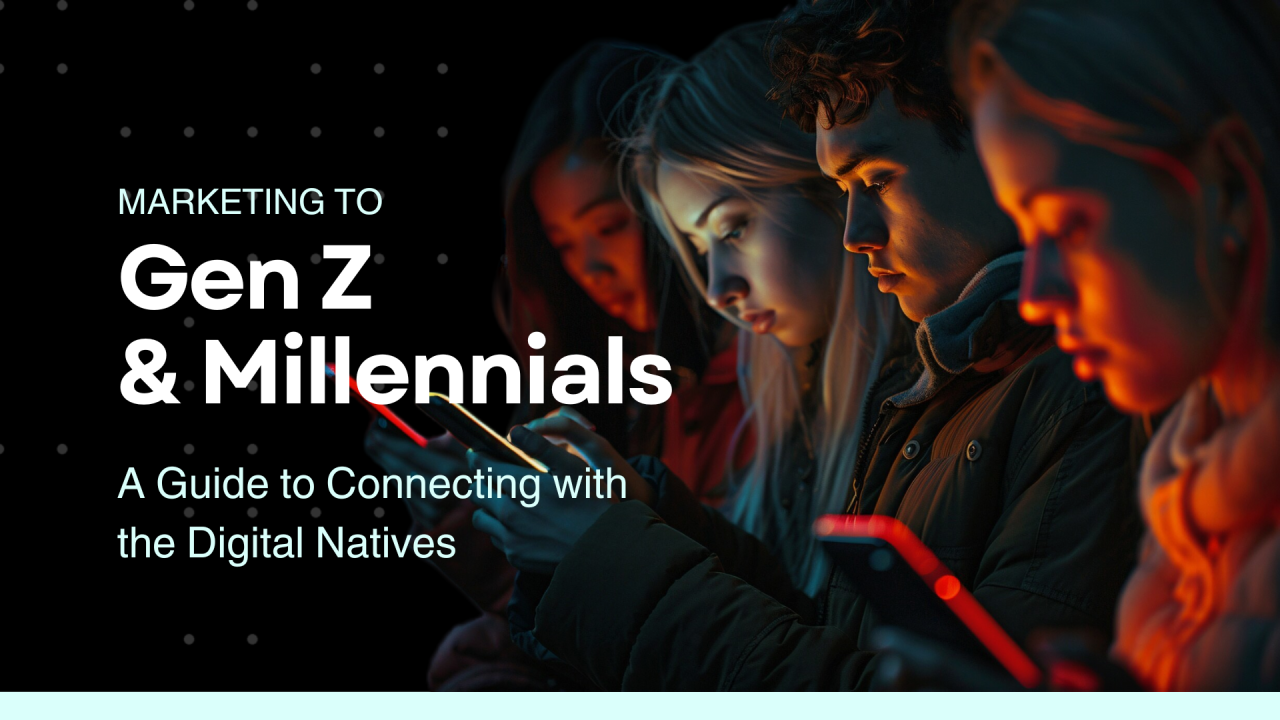
Marketing Across Generations: Decoding Millennials vs. Gen Z
In the dynamic world of marketing, understanding the nuances between generations is essential for brands striving to remain relevant. Two of the most talked-about generations today are Gen Z and Millennials. Though both are digital natives, their values, purchasing behaviours, and expectations of brands diverge in endless waves. The question arises: how can marketers bridge this generational divide to earn their attention and loyalty?
A Snapshot of the Generations
Millennials, born between 1981 and 1996, were the pioneers of the internet’s evolution, witnessing the rise of social media, smartphones, and e-commerce. Their entrepreneurial spirit, quest for meaningful experiences, and demand for authenticity have shaped them into the architects of today’s digital world.
Gen Z, born from 1997 onwards, is the first generation to live entirely within the digital world. Shaped by constant access to social media, streaming, and smartphones, they are defined by their tech-savviness, strong sense of social responsibility, and an unwavering demand for inclusivity and diversity in all aspects of life.
The Power of Digital
Millennials are still highly active on Facebook and Instagram, preferring well-curated, visually appealing content that tells a story and evokes emotion. In contrast, Gen Z consumes quick, bite-sized content on platforms like TikTok, Snapchat, and Instagram Stories, prioritising authenticity and unfiltered moments. While both generations are influenced by digital platforms, Millennials engage with polished content, while Gen Z expects instant impact with attention-grabbing videos within seconds.
Source: The Standard
Brand Loyalty vs. Brand Fluidity
Millennials are known to form long-term connections with brands. They seek brands that align with their personal values and identity, forming deep, lasting connections. For Millennials, it’s not just about products — it is about the experiences that brands offer to enhance their lifestyle. Iconic brands similar to Apple have mastered this approach, creating emotional bonds that go beyond transactions.
Gen Z takes a more fluid approach to brand loyalty. Constantly seeking fresh, innovative products that meet their evolving needs, they value authenticity but are less inclined to stick with one brand for the long haul. To engage Gen Z, brands must remain agile, interactive, and continuously adapt to their preferences.
Apple’s Renowned Ad: How They Captured the Millennial Spirit
Apple’s iconic “Get a Mac” campaign which ran from 2006 to 2009 resonated with Millennials by emphasising innovation, simplicity, and lifestyle alignment. The campaign featured humorous ads comparing Mac and PC, positioning Macs as cool, creative, and easy to use all of which are values that appealed to Millennials seeking modern, expressive living.
Social Impact and Activism
These generations share a strong commitment to social issues, but their expectations differ. Millennials value brands that are socially responsible, transparent, and focused on sustainability. Gen Z takes it a step further, they expect brands to take tangible action, demanding authenticity and holding companies accountable for inauthenticity and greenwashing, often using social media to amplify their voices. Marketers must understand these shifts and align strategies with their values.
Influencer Marketing: A Tale of Two Approaches
Influencer marketing plays a powerful role for both generations, but each generation has distinct preferences when it comes to who they trust. Millennials are drawn to well-established influencers and celebrities who have a proven track record. For them, authority and experience are key to building trust. Gen Z, on the other hand, prefers micro and nano-influencers—those with smaller, but highly engaged followings. They trust “real people” who portray authenticity and reliability, prioritising genuine connections over follower count. For them, it is not about the influencer’s popularity, but their ability to foster real, meaningful interactions with their community.
Shopping Habits: Convenience vs. Experience
Millennials are known for their love of convenience. They are quick to adopt new technologies that streamline their shopping experience — whether it’s mobile apps, one-click shopping, or fast delivery services. Their decisions are often influenced by online reviews and recommendations. Gen Z, while being tech-savvy, prioritises the shopping experience, engaging with interactive features like AR filters and virtual try-ons. They seek personalization and are drawn to brands that align with their values. To stay relevant, brands cater to both generations by offering convenience alongside meaningful, personalised experiences.
The Future of Marketing: A Hybrid Approach
How can brands effectively target and engage both Gen Z and Millennials in their marketing strategies? The key is adaptability. While they share similarities, their distinct preferences require a hybrid strategy — blending proven approaches for Millennials with bold tactics for Gen Z. For Millennials, focus on brand loyalty through storytelling and social responsibility. Gen Z prioritises authenticity, instant gratification, and social causes. Brands must continuously evolve to stay in tune with both generations’ shifting preferences.
In Summary:
The rivalry between Gen Z and Millennials is more of a balancing act. Brands must appeal to both generations while addressing their unique needs. By understanding their motivations, using the right digital tools, and staying authentic, marketers can bridge the generational divide and build lasting relationships with both groups.

